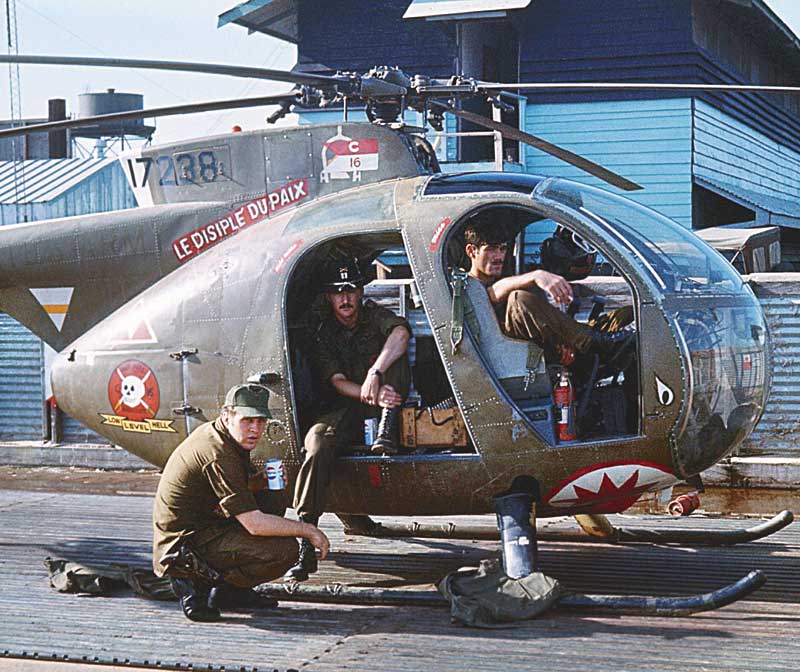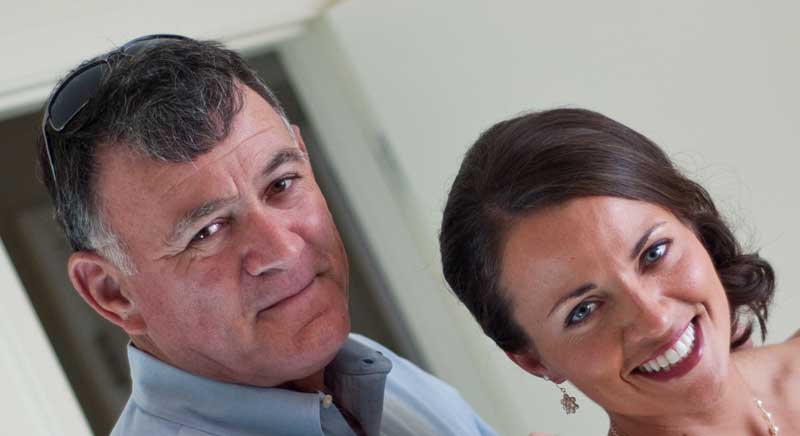The Silver Star is our country’s third highest military decoration for valor, exceeded only by the Distinguished Service Cross and Medal of Honor. If you ask my buddy Mike King how he earned the Silver Star, or if you ask about the personal cost involved, he may stare at you, but he won’t tell you and there is nothing you can say to convince him you deserve to know.
The Silver Star is awarded for “gallantry” in action, one peg above heroism on the military awards chart, but if you utter the word “hero” to Mike he will think you a damn fool and he just might say so because he’s inclined to speak his mind without the inhibitions that encumber most of us.
Too many Americans have no interest in or concept of serving our country under difficult conditions. Too many don’t even know anyone in uniform and since these days virtue is measured in self-indulgent pastimes and cell phone acumen, I believe our youth would do well to pay attention, to measure themselves against examples of service such as Mike King in Peachtree City.
He retired from the U.S. Army as a lieutenant colonel, but I will tell you a little about his younger days as a lieutenant, serving as a helicopter pilot in the Vietnam War in 1972. The war was rapidly winding down and all American ground troops had been withdrawn from Vietnam. Our pilots remained to support South Vietnamese ground troops fighting to protect their country from North Vietnamese invaders seeking to impose Communism by force.
 Mike was a Scout pilot with Charlie Troop of the 16th Cavalry in the delta region in southern Vietnam near the equator, where the mighty Mekong River spreads out in many fingers to flow in ever-slower ebbs into the South China Sea, depositing its silt along the way to build more flat so-called land, where there are no foxholes because digging a few inches will strike water, where palm trees grow tall and the vegetation spreads thick and fast beside thousands of rice paddies separated by dikes in squares, where the steamy heat and humidity suffocate newcomer Americans while rotting the clothes off their back and distracting them from noticing trip wires and mines, where snakes abound and the bugs are so big they might conspire to carry you off for dinner, where ground transport was predominantly by boat on the countless canals under cover of darkness despite curfews and civilians had been mostly relocated out of the areas designated as free fire zones due to relentless enemy activity.
Mike was a Scout pilot with Charlie Troop of the 16th Cavalry in the delta region in southern Vietnam near the equator, where the mighty Mekong River spreads out in many fingers to flow in ever-slower ebbs into the South China Sea, depositing its silt along the way to build more flat so-called land, where there are no foxholes because digging a few inches will strike water, where palm trees grow tall and the vegetation spreads thick and fast beside thousands of rice paddies separated by dikes in squares, where the steamy heat and humidity suffocate newcomer Americans while rotting the clothes off their back and distracting them from noticing trip wires and mines, where snakes abound and the bugs are so big they might conspire to carry you off for dinner, where ground transport was predominantly by boat on the countless canals under cover of darkness despite curfews and civilians had been mostly relocated out of the areas designated as free fire zones due to relentless enemy activity.
Scout pilots were a special breed, kind of the “Airborne Ranger” among helicopter pilots, all volunteers for their dangerous mission. They flew the Hughes Cayuse OH-6 Low Observation Helicopter, “Loach” in our slang, a powerful little aircraft that suffered none of the power problems plaguing other helicopters in the lousy “density altitude,” a by-product of the heat. The Loach gave a quick, highly responsive, low-vibration ride, perfectly suited to the Scout mission of flying low, snooping around, blowing tall grass apart looking for footprints, campfires, weapons or food caches or any other sign of the expertly concealed enemy, always trying to draw their fire to expose their position.
Mike and his fellow Scouts flew missions in Loach pairs, darting around low and usually quite slow looking for trouble, flying a circular cap around a target 180 degrees apart to cover each other with the gunner’s M60 and the pilot-controlled mini-gun, a breathtaking weapon that fired 7.62mm rounds at the rate of 4,000 per minute on full speed.
Of course, standard issue weapons weren’t enough for these cowboys, so they carried a pile of “bombs,” a concussion grenade taped to three pounds of C4 plastic explosive. The gunner used them like bowling balls to roll on the fly into the door of enemy bunkers after pulling the pin. The longest four seconds of Mike’s life was when his gunner in the back seat was hit in his chest protector by an enemy round and knocked to the other side of the aircraft while he was holding the bomb, yanking the commo chord out of socket, leaving Mike to wonder whether the grenade was still in the back seat with the pin pulled, which would have turned them and the aircraft into dust.
The first time Mike was shot down, he was flying the wing of Hugh Mills, a legendary Scout pilot and member of the U.S. Army Aviation Hall of Fame. Intelligence had reported an NVA unit for an end of the day mission, which afforded the brass at Group Headquarters the opportunity to join the Cavalry package that was sent to check it out since this was thought to be a “milk run.” The brass would observe from the Command and Control Huey helicopter at a higher and safer altitude, so what could possibly go wrong?
Mike and Hugh flew their approach low, at about eight feet off the ground and 80 knots to surprise the enemy – if they were there.
As they rounded a turn at a canal, suddenly the enemy unit was in close front, surprising all on both sides, and Mike lost track of his fire team lead bird because there were lots of pretty twinkles out front (enemy muzzle flashes), and as the rounds zipped and whacked into his aircraft, Mike was focused on the minigun to shoot back.
 He says after a minigun burst it all seemed like slow motion because everything went quiet since his turbine was dead and that low to the ground there was no time to do anything. When he hit the ground that tough little helicopter rolled right through the enemy camp, slinging off all kinds of parts as it rolled, and kept rolling beyond into a rice paddy.
He says after a minigun burst it all seemed like slow motion because everything went quiet since his turbine was dead and that low to the ground there was no time to do anything. When he hit the ground that tough little helicopter rolled right through the enemy camp, slinging off all kinds of parts as it rolled, and kept rolling beyond into a rice paddy.
By the time that highly survivable cockpit stopped rolling, everything external had either fallen off or had been torn off, including the plexiglass bubble, and a dizzy, banged up and pissed off Mike unstrapped and climbed out, looking around for John Hazelwood, his door gunner in the back seat, but all he could see was John’s nose just above the dirty rice paddy water.
So Mike drew his knife, cut John’s safety belt, pulled him up by his shirt, threw him over his shoulder and proceeded to a nearby rice paddy dike for cover. Carrying Hazelwood through waist-deep foul water fertilized with animal and human dung, Mike noticed armed enemy troops, who looked rather pissed off themselves, advancing from both sides of the dike.
Hazelwood told Mike later that his legs worked fine, but he decided if Mike was determined to carry him he would gladly go along for the ride, but as the enemy closed in he did hasten to remind Mike about his .38 pistol, their only remaining weapon.
So Mike drew his pistol and fired all six rounds while still carrying Hazelwood, alternating his fire from one side to the other, hitting two of the enemy and slowing the others down. Mike doesn’t remember, but John swears that Mike threw the empty weapon at a nearby enemy soldier just before the C&C aircraft arrived to pick them up, first dispatching nearby enemy with the gunner’s M60.
Mike’s John Wayne impersonation was over, at least for that day, February 20th, 1972.
But that is not the occasion for which Mike received the Silver Star.
Mike’s luck held through being shot down four more times in the Delta, including one day a very angry enemy soldier emptied his AK-47 into Mike’s helicopter from point-blank range as he flew by very low, putting one round in the middle of his chest protector. Mike still has that chest protector, or “chicken plate” in our lingo, with the 7.62mm bullet hole to remind him how much his bruised ribs hurt for days.
One day, Mike zigged when his gunner expected him to zag, and unintentionally shot holes in the ends of each of the four rotor blades. Mike had to set it down before the extreme vibration tore the aircraft apart. If you want to call that a shoot-down, then make it six in all, way too many tests of a young man’s courage and luck.
If you ask Mike he’ll tell you he just did his job in Vietnam like the other guys. Just like them, he didn’t really want to be there amidst all the misery, he didn’t hate anyone and he didn’t want to kill anybody, he was doing his duty.
One of the reasons he won’t answer some questions is that he knows fancy medals that set one man apart don’t make a dime’s worth of difference among Vietnam veterans; we’re all brothers who were in it together.
As any combat veteran can tell you, war is a nasty business, the price of admission to a brotherhood of those who were there. I have known Mike King for just five years but he and I will be brothers and friends until one of us draws a last breath, and there is no other in this world I would rather have watch my back.
Young people, tear yourself away from your cell phone for a moment, take notice of people like Mike King, measure yourself and wonder: How can I serve an interest that is greater than me? Only you can answer the question.
[Terry Garlock of Peachtree City occasionally contributes a column to The Citizen. He was a Cobra helicopter pilot in the Vietnam War and wrote a book about Vietnam veterans, “Strength & Honor: America’s Best in Vietnam.” See www.garlock1.com.]
Above, in first photo, Mike King (front seat) and Hugh Mills (back seat) taking a break in Mike’s OH-6a “Loach.” Left, in second photo, Mike King with his daughter, Abby. Photos/Special.
[CORRECTION: The original version misidentified the person with Mike King in the second photo. The person with King is his daughter Abby.]












Leave a Comment
You must be logged in to post a comment.